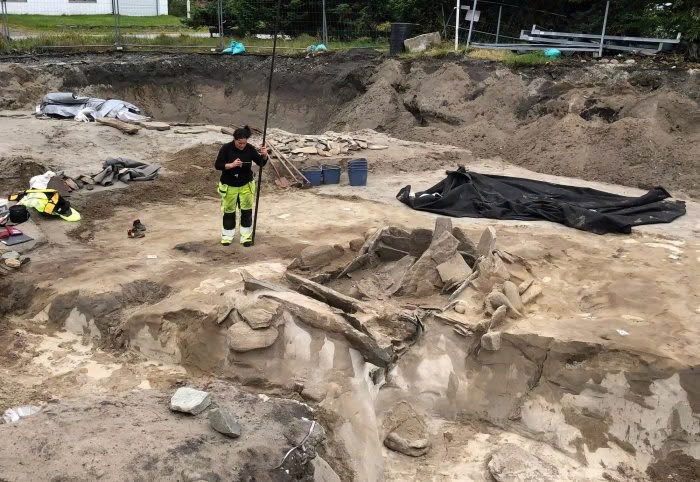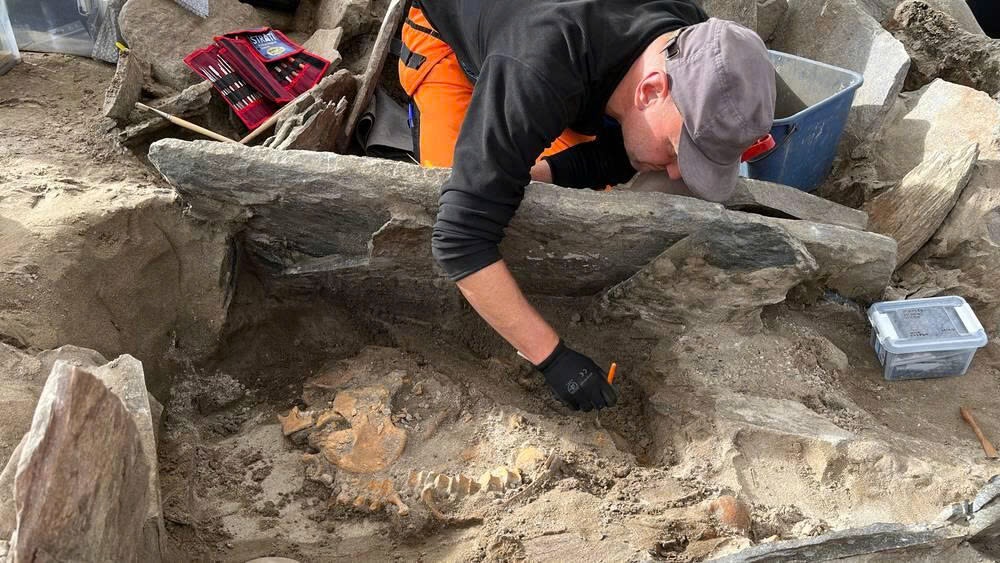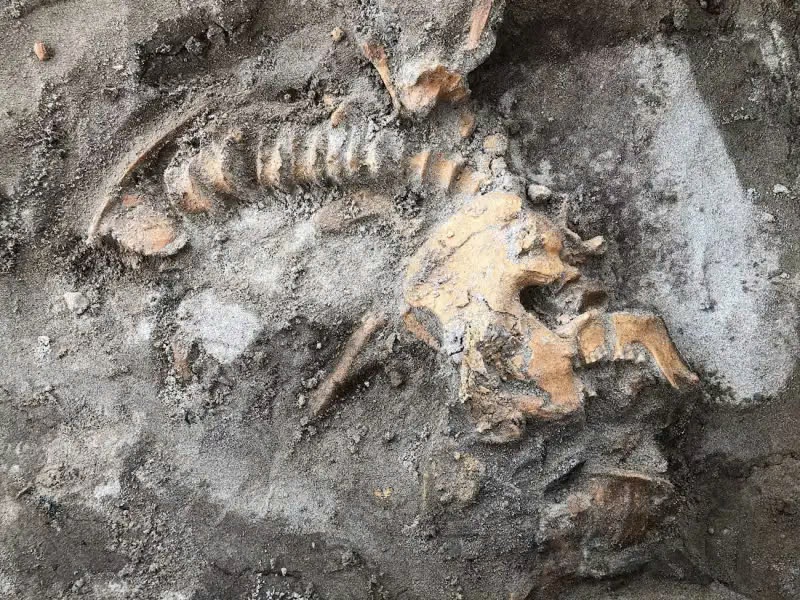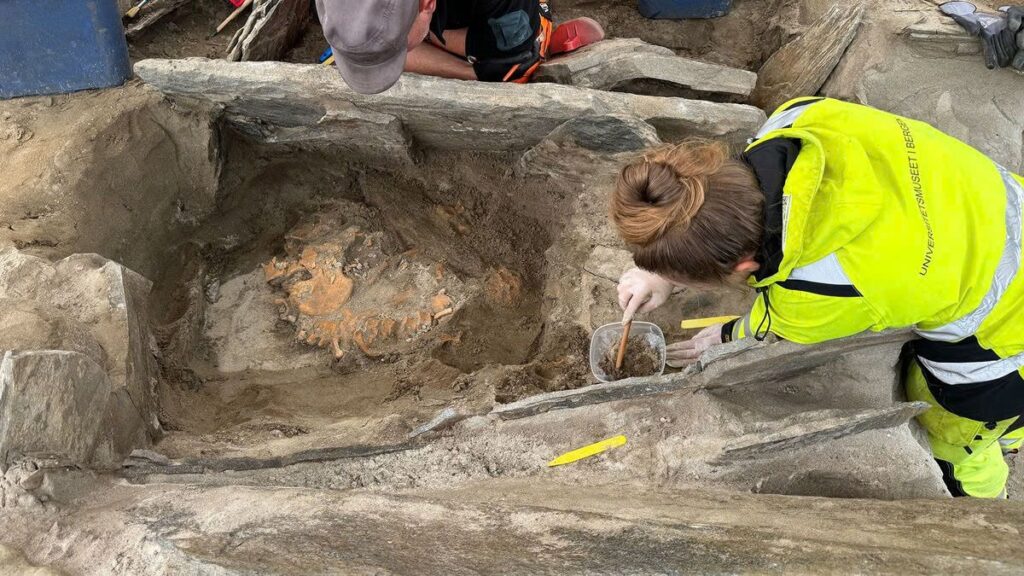In the rugged coastal landscape of Western Norway, where mountains meet the sea and ancient myths still cling to the mist, archaeologists have uncovered one of the nation’s most astonishing finds in a century. Near Selje in Vestland County, just south of the windswept cape of Vestkapp, a 4,000-year-old stone box grave — known in Norwegian as a hellekistegrave — has emerged from the earth, offering a rare glimpse into the country’s early agricultural and spiritual life.
A Landmark Discovery in Western Norway

The discovery, made during an archaeological survey of the area, has already been hailed as one of the most significant Stone Age finds in Norway in the past hundred years. The grave, remarkably intact, measures about four meters long and over two meters wide, its massive stone slabs forming a rectangular chamber typical of the late Neolithic and early Bronze Age periods.
While similar graves have been found in Buskerud, Østfold, and even parts of Denmark, this is the first of its kind to be uncovered on Norway’s western coast — a region where the combination of rugged terrain and maritime climate has often erased traces of ancient habitation.
“It’s a sensational discovery,” said Morten Ramstad, senior archaeologist with the University of Bergen’s antiquities section. “We’ve never seen anything like this in this part of the country. It’s a missing link in our understanding of how early agricultural societies expanded westward.”
An Ancient Bridge Between Worlds

The structure itself, built with precision and purpose, reflects a sophisticated society that had already begun transitioning from hunter-gatherer traditions to more settled agricultural life. Inside the chamber, researchers found well-preserved human bone material — an extremely rare occurrence given Norway’s harsh environmental conditions.
Preliminary analysis suggests that the remains belong to one or more individuals buried with deliberate care, possibly accompanied by tools or offerings. The presence of organic traces and fragments of pottery indicates a culture already familiar with farming, animal husbandry, and ritualized burial — marking a turning point in the region’s prehistoric timeline.
Unlocking Clues to Norway’s Agricultural Revolution

Agriculture first reached Norway around 3950 BCE, likely spreading from southern Scandinavia through migration and trade. However, the pace and pattern of that expansion — particularly toward the western coast — have long puzzled historians. The newly uncovered grave may hold vital clues.
“Until now, we believed that early farming communities remained concentrated in the southeast,” explained Ramstad. “But this discovery suggests that people in Western Norway may have adopted agriculture much earlier than previously thought. It changes how we view the entire cultural landscape of the region.”
Using radiocarbon dating and DNA analysis, the research team hopes to identify the genetic origins of those buried in the grave — determining whether they were locals who adopted farming practices or newcomers bringing new ideas and technologies from other parts of Scandinavia or continental Europe.
Preserved by Stone and Time

The stone box grave itself is an engineering marvel. Constructed from large, flat slabs of local rock, the structure likely served as a communal burial site, used over several generations. Its placement — slightly elevated above the surrounding valley — suggests it was meant to be visible, a lasting monument to ancestors who shaped early life along Norway’s wild coast.
The preservation of human remains is particularly remarkable. In Norway’s acidic soil, bones often decompose rapidly, but the grave’s enclosed design, coupled with layers of peat and stone, created a natural seal that protected its contents for millennia.
A Window Into Norway’s Ancient Story

This discovery adds another vital piece to the story of Norway’s transformation — from Ice Age hunter-gatherers to agrarian societies, and eventually to the Viking Age that would project Scandinavian influence across Europe.
The grave belongs to a transitional era — one where stone tools still prevailed but communities had begun to cultivate crops, raise livestock, and build permanent homes. The people of this time navigated a world in flux: climate changes, shifting coastlines, and the dawn of social hierarchies that would later define Nordic society.
Cultural Continuity and Spiritual Meaning
For archaeologists, the stone box grave is not just a burial site; it is a message from the past — a reflection of how early Norwegians understood life, death, and continuity. Similar graves found elsewhere in Scandinavia often contained offerings of pottery, weapons, or ornaments, symbolizing a belief in life after death and a connection between ancestors and the living.
In Selje, where legends of saints and spirits have blended for centuries, this discovery reinforces a deep cultural continuity: people have long gathered, farmed, and buried their dead here, guided by traditions that stretch back four thousand years.
Looking Ahead: What the Future May Reveal
Ongoing excavations promise even more insights. Researchers are conducting soil analysis, residue testing, and isotopic studies to learn about the diet, health, and mobility of the individuals interred. If DNA can be extracted, it may help map early genetic links between Norwegian populations and other prehistoric communities in northern Europe.
Meanwhile, local museums and cultural institutions are preparing exhibits to showcase the find — not merely as an ancient artifact, but as a story of connection, reminding Norwegians that the roots of their identity reach far deeper than the Viking ships and sagas that dominate popular imagination.
A Discovery That Redefines the Past
As experts continue their work, one truth already stands clear: this 4,000-year-old grave is far more than a burial site. It is a bridge between epochs — between prehistory and history, between mystery and understanding.
“It’s humbling,” said Ramstad. “We’re looking at people who lived thousands of years ago, yet they built something designed to endure. And here it is — still speaking to us across time.”
For Western Norway, the find is not just a local story but a revelation that reshapes the narrative of an entire region. Beneath the layers of earth and stone, the voices of Norway’s first farmers have finally been heard — and their legacy, once buried, now lives again.
